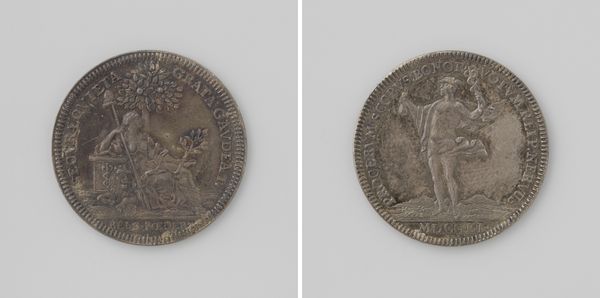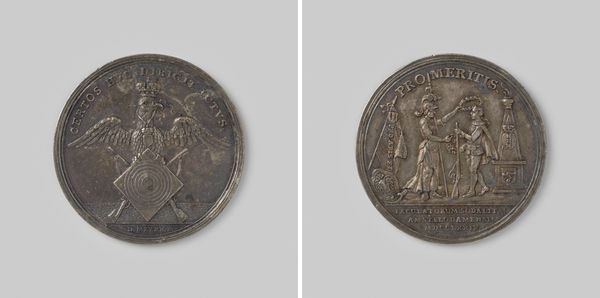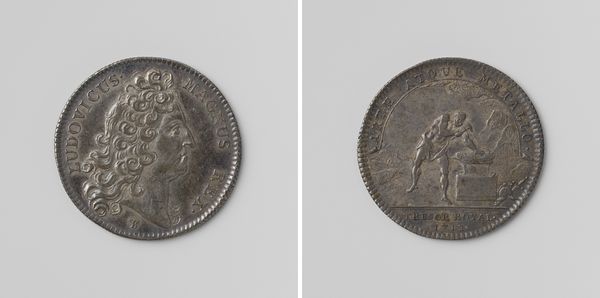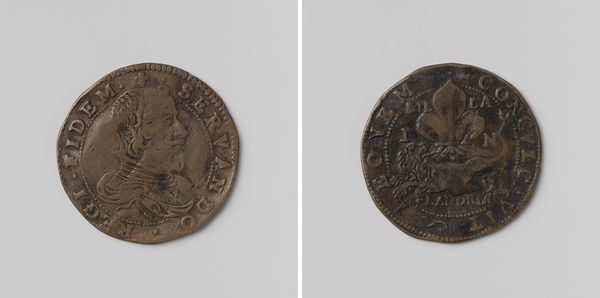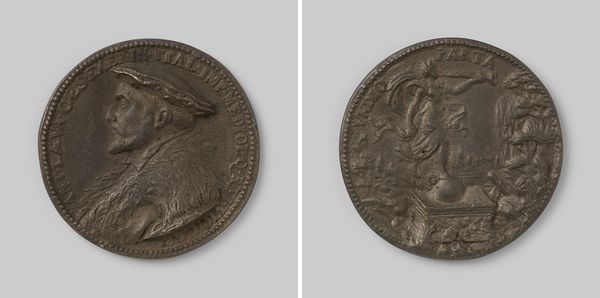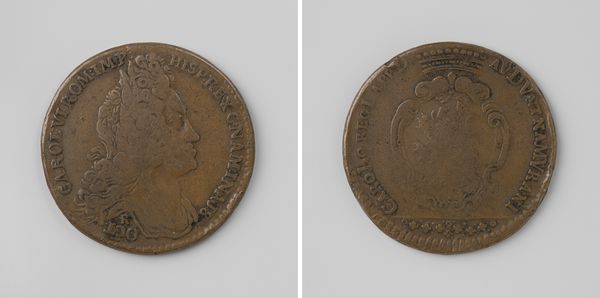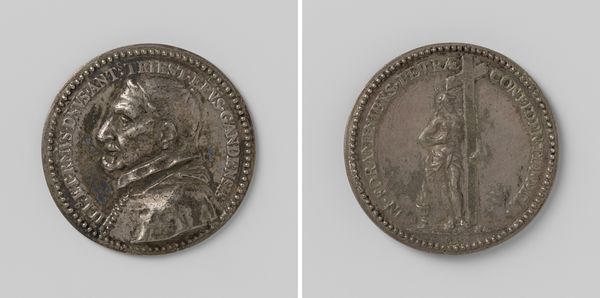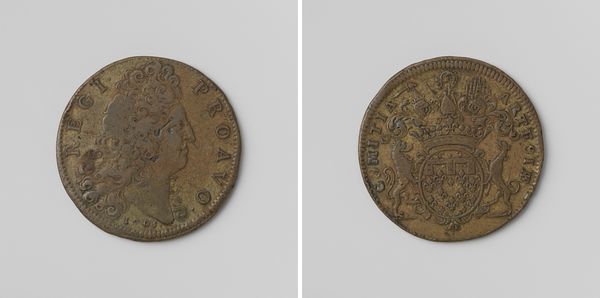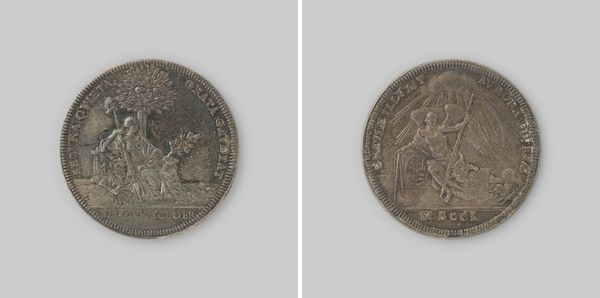
Lodewijk XV, koning van Frankrijk, rekenpenning geslagen op last van de koninklijke schatkamer 1732
0:00
0:00
jeanduvivier
Rijksmuseum
print, metal
#
portrait
# print
#
metal
#
sculpture
#
history-painting
Dimensions: diameter 2.9 cm, weight 6.25 gr
Copyright: Rijks Museum: Open Domain
Editor: Here we have a calculation coin dating back to 1732, portraying Louis XV, King of France. It's struck from metal, attributed to Jean Duvivier, and is housed here at the Rijksmuseum. Looking at it, I find the imagery a bit contradictory—a royal portrait alongside scenes of manual labor. What do you see in this piece from your perspective? Curator: The coin, in its dual imagery, becomes a powerful instrument of propaganda. While it commemorates Louis XV, it simultaneously uses the image of labour to suggest royal munificence and economic prosperity under his reign. How might the intended audience, presumably merchants or financiers, have reacted to this juxtaposition? Editor: That’s interesting. So, the labor scene isn't just a generic image, but a deliberate statement about Louis’s economic impact? But how reliable would this kind of imagery have been as an indicator of the true state of affairs? Curator: Exactly. Such imagery often served an ideological purpose, projecting power and stability, regardless of the economic realities faced by the populace. The Royal Treasury issuing these is important to note as these calculated gestures directly communicate with the royal audience through visual spectacle and promise of reward. Can you see the clear messaging that promotes this royal image? Editor: I do now. It's not just a portrait; it's a calculated message. So this coin reflects an intentional crafting of the King's image through the controlled narrative of the Royal Treasury and carefully selected images, rather than an objective reality. Curator: Precisely. The coin shows how artistic expression was manipulated by the dominant discourse in order to solidify existing social structures through art. In this context, who benefits from creating a portrait of such opulence during this specific historical timeframe? Editor: Considering this coin, I’ve gained a new appreciation for the embedded political context in art and how historical factors play out within imagery. Curator: Indeed. And thinking of historical setting is a good approach for analyzing images like this. The intersection of socio-political messaging, institutional commissioning and portraiture truly reflects powerful ideology and propaganda during this time.
Comments
No comments
Be the first to comment and join the conversation on the ultimate creative platform.
